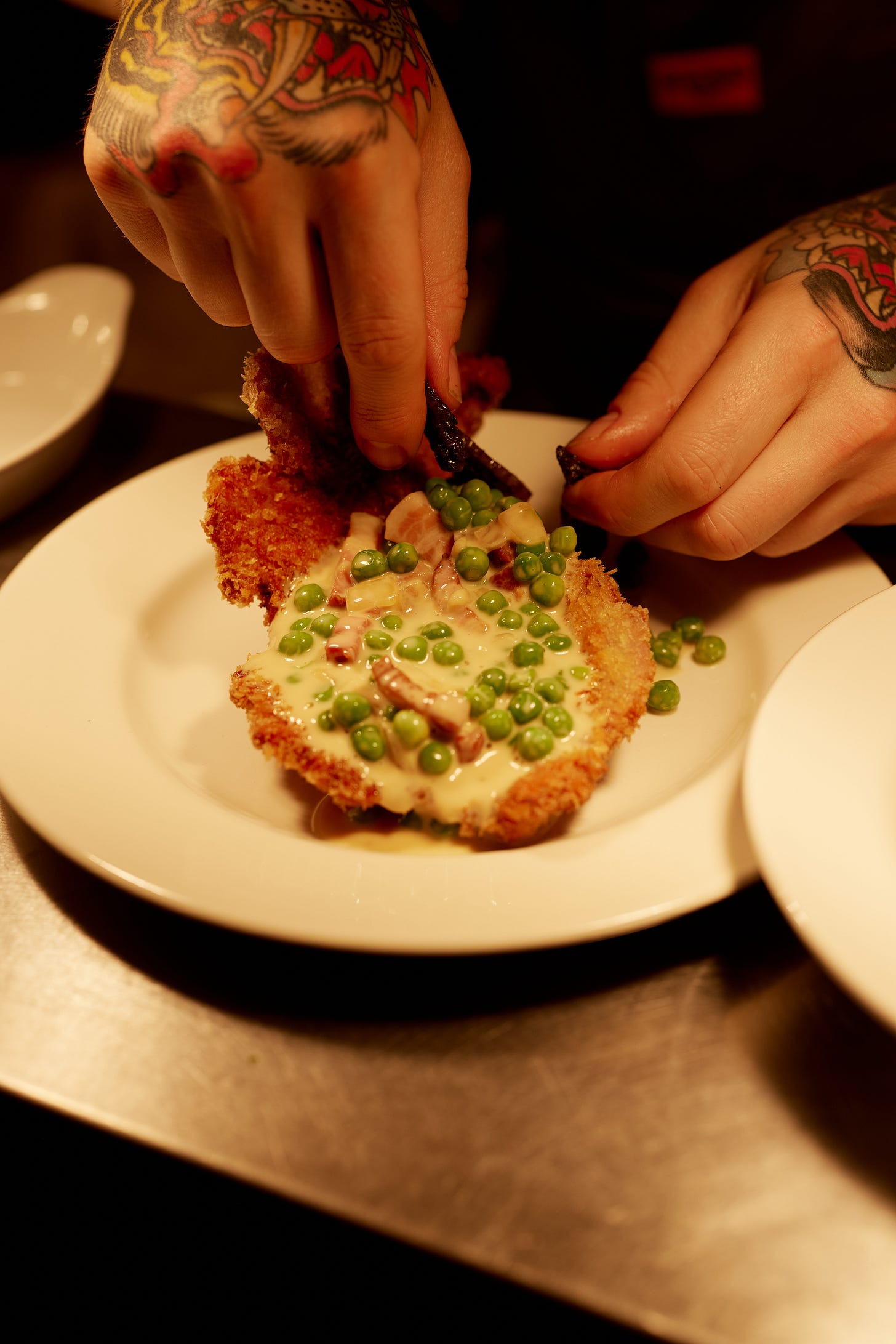Where the Money Goes: Anatomy of a British Restaurant in 2025
Behind the scenes of a British restaurant in 2025, where every pound goes, and why we're still doing it.
Running a restaurant in 2025 is like hosting a dinner party during a fire drill. From the dining room, it all looks composed: full tables, hot plates, smiling staff. But behind the pass, the panic is very real.
Margins are thinner than ever. Costs are climbing. Diners eat out less. And the arithmetic that once sustained this business no longer adds up. Bills swell. Buffers evaporate. Profit feels theoretical at best.
So where does the money go? What does your £25 lunch actually cover?
The Myth of the 30/30/30/10 Rule
For years, restaurateurs followed a neat formula: 30% food, 30% wages, 30% overheads, 10% profit. It was tidy and easy to explain. But in today’s climate, it no longer holds.
Food costs have surged. Wages, rightly, are higher. Energy bills have doubled. That 10% margin? Most would take 3% and a fridge that works.
Take the £25 Pork Schnitzel, Peas, Bacon & Morels from our menu at Lapin. The pork is local and ethically reared. The morels alone cost more than a good bottle of wine. Then there’s prep, rent, power, insurance, laundry, VAT. What’s left? Barely enough. And that’s before the dishwasher breaks down on a Saturday night.

Death by a Thousand Tomatoes
Food prices used to be predictable. Not anymore. We’ve pulled cauliflower cheese from the Sunday roast more than once because the wholesale price doubled in a week. Charging £12 for it felt absurd.
And it’s not just vegetables. Burrata costs more than beef. Storms wipe out seafood supplies or send prices soaring. Turbot is delicious, but not at £50 a portion.
We adapt constantly. Menus shift with the market. Fixed menus are risky. You either absorb the cost or look greedy.
Buying British helps. It’s sustainable and often better tasting, but it’s not always cheaper. Feed, fuel, wages — we all feel the squeeze.
Each week brings new prices. We adjust, or we don’t survive.
The True Cost of Labour
Restaurants are built on people. We hire well, train thoroughly, and pay fairly — not just in wages, but in respect, stability and time.
The wage packet is only the start. Add tax, pensions, holidays, sick pay, training. Then factor in what it takes to build a team that stays.
Yes, wages have risen. They should. Work-life balance is no longer a perk. It’s the standard. Honour that and staff stay.
That commitment shows up in every plate, every shift. And no one’s crying in the cellar.
Overheads: The Quiet Erosion
Overheads sound fixed. They’re anything but. Rent, rates, insurance, bins, laundry — all creeping up month by month.
Electricity bills have doubled. Insurance premiums rise even with no claims. Cutlery disappears. You pay for all of it.
Sometimes a glowing review leads to a rent hike. The landlord sees promise. You see a bigger bill.
These costs don’t make headlines, but they quietly chip away at sustainability. You can explain a £32 steak. A £3 waste fee? Less so.
Where Profit Actually Lives
Profit isn’t in the plate. It hides on the fringes — private bookings, business lunches, smarter contracts, better card rates.
The old model’s gone. Labour now eats at least 35% of revenue. So we look elsewhere to balance the books.
We try to find overlooked sites with reasonable rent. Ex-restaurants with existing kit. We negotiate everything — internet, bins, payment systems. I still do the branding, photos, website, and social media. We keep it lean.
Each spring, I go through twelve months of service data and tweak our business model to reflect what the numbers tell me. Not just to plan. It calms the panic that comes with an empty dining room. It gives a sense of control.
We’re not chasing yachts. We want to survive, pay fairly and weather the shocks.
Why It’s Still Worth It
So why keep going?
Because when it works — when the room hums and the plates come back clean — it’s still magic.
When someone says it’s the best meal they’ve had in years and books again before the bill lands, it’s all worth it.
Even in the chaos, with the right team, there’s joy. Even when someone sends back a medium-rare steak because it’s pink.
This business was never about comfort. But a good restaurant lifts people. That alone makes it worth it.





It’s tough. No matter how many times these facts are told, there’s still a number of the general public who believe that they’re being ripped off because they’ve done the numbers on a Tesco shop.